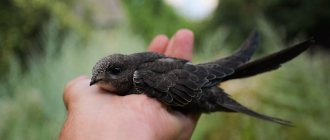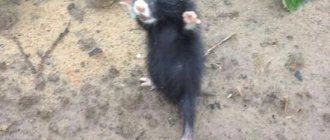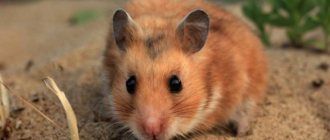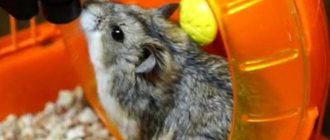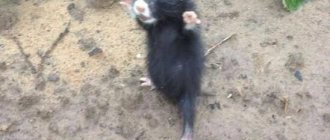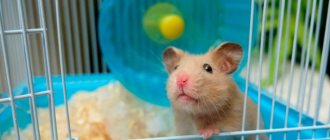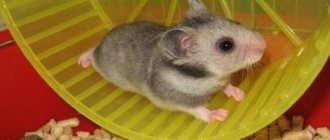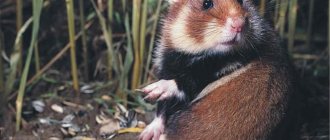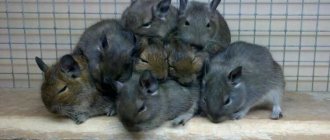The steppe hamster (common) is a large self-spreading rodent species that has virtually nothing in common with domestic pets. It is distinguished by small ears, well-developed toes, and is excellent at digging holes and doing other things. But the most important thing is that he is able to live independently; he not only does not need human help, the hamster will aggressively accept it. Sometimes it is much safer to meet a snake or a poisonous spider than this wild and vicious rodent.
Description of the species
You can see quite a lot of features at one glance at such a rodent as the steppe hamster. The description of its appearance is as follows:
- stocky body with a thick head and short neck;
- small ears, shiny and relatively huge eyes;
- short paws with well-developed toes and short claws.
The fur of this animal includes two elements: the base and the undercoat. Thanks to the latter, the hamster can easily endure winters and sub-zero temperatures. The color is usually light yellow or brown. Dark and black spots are common.
A characteristic feature is that hamsters have white feet. But the front and hind limbs are black on the inside.
But this does not mean that you will not be able to meet a steppe hamster, which will have a completely different color. Sometimes you can see completely white or, on the contrary, completely black representatives of the family.
Separately, it is necessary to say about the sizes. Males reach a length of 34 cm excluding the tail. The latter can reach up to 5 cm in length.
Distribution area
The steppe hamster is distributed over quite wide areas. It lives in lands from Europe to China. In particular, in Russia it can be found in the open spaces from Smolensk to the southern taiga.
This hamster does not require any special living conditions, which is why it can live virtually anywhere. For the most part, animals are found near grain and wheat fields. Some individuals dig their burrows directly on these arable lands. The rest prefer to live closer to people. They settle near villages and hamlets. The food consists of various products from the garden.
It is not uncommon for hamsters to visit barns and storerooms. Like house mice, they carry supplies into their burrows. But, unlike them, hamsters are much more dangerous, as they are aggressive against humans. Therefore, it is necessary to set traps if such a “neighborhood” is suddenly noticed.
Impact on human life
Gophers are carriers of plague, tularemia and other serious infections that are dangerous to humans, which can lead to disability or death. The main food of the animals is cereals and plant fruits , which is why agricultural lands become places of pilgrimage in search of delicacies. This affects the amount of harvest and provokes people to take measures to exterminate rodents (set traps, gasify burrows, leave poisoned baits).
Some people keep gophers as pets. With skillful training, they are able to perform various tricks and delight their owners. Using their example, scientists are studying the phenomenon of anabiosis (temporary slowdown of life processes in the body under the influence of external factors). Goth fat, which is used in cosmetology and medicine in the treatment of colds and wounds, is also beneficial.
Hamster hole
The steppe hamster spends most of its life in a burrow. This is not at all due to the fact that he is afraid to leave the confines of his home. The animal is quite fearless. But to hunt, he needs a lot of rest.
The hamster hole goes 1-2 meters deep into the earth. It all depends on how easy it is to dig the soil. The basis of the house consists of:
- living chamber;
- inclined exit;
- steep entrance.
The living chamber, in turn, has three “doors”. The first two are intended to ensure that the animal can freely enter home and leave if necessary. And the third door is oriented to the room with supplies. Only in winter and early spring does the hamster use products from there; on other days its diet consists of fresh grains, vegetables and fruits.
How to identify a hamster? You can do this based on characteristic buildings. They are easily recognized by small piles of earth located directly near the inlet/outlet. They are sprinkled with grain husks on top.
Using a small stick, you can find out whether a rodent lives in the found hole. It needs to be placed inside and then pulled out. If cobwebs, moss, husks or grass are found on it, then the dwelling is abandoned. No hamster would keep his house in disarray.
Interesting answers
- Nettle - message report (grades 2, 3, 4)
Nettle is known to be beneficial and irritate the skin when touched. Nettle is a perennial green plant that grows up to 1.2 m in height, and the bush grows up to 1 m in width. It grows like a weed and is not picky about climate and care. - Mica is a mineral (report message 2, 3, 4 class the world around us. Geography)
Mica is one of the most common minerals. But despite this, the upper layers of the earth’s crust contain no more than 4 percent. - The story of Fedya in the story of Bezhin Lug Turgenev
This is how he showed his upbringing (He believed that this is how children from rich families should behave) - The life and work of Evgeny Schwartz
Evgeny Lvovich Schwartz (1896-1958) is an outstanding Soviet playwright, prose writer, and screenwriter, whose creative work includes more than twenty-five plays. - The Life and Work of Carlo Gozzi
Carlo Gozzi (1720-1806) is a famous Italian playwright and writer, from whose pen a large number of fairy-tale plays, called fiabs, based on folklore elements of the storyline came out
Feeding the steppe hamster
What does a hamster eat? It is impossible to specify this moment in any way. Everything directly depends on the place where he lives. If its habitat is focused on places near grain fields, then it will feed mostly on grain crops. At the same time, its harm to agriculture will be minimal. Moreover, often during their trips for supplies, hamsters eat small insects and animals, which makes it easier for humans to get rid of them.
If the animal has settled near a village, then the basis of its diet will be vegetables and those crops that are most popular in the region. But they cannot be collected as supplies for the winter, so hamsters have to destroy people's warehouses and barns to find grains.
It is not uncommon for hungry animals to attack chickens, especially if there is no chicken nearby to protect them or at least make some noise.
Mink
Being prey to larger predators, the animal prefers to live in burrows that it digs itself, although sometimes it can occupy the abandoned home of a gopher. A hole is a complex structure of many tunnels, the total length of which can be eight meters and up to two and a half in depth. For safety, the rodent makes up to a dozen entries and exits.
We advise you to find out useful information about hamsters, namely: what hamsters eat, how many years they live at home and how to set up a cage for a rodent.
The housing system provides places for storing food, several of them, a latrine and a resting place, covered with a soft bedding of herbs and wool. At the end of summer, the animal begins to actively stock up on food supplies.
During the active summer time, the wild hamster happily feeds on small vertebrates, insects and their larvae, and in the winter it sneaks grain crops into storerooms so that it has something to eat without going to the surface. Among the winter reserves of the dug holes, up to 90 kg of potatoes and various grains were found: buckwheat, millet, wheat, corn, peas, etc.
The rodent's cheek pouches allow it to carry about 46 grams of grain at a time, so throughout August and autumn, before the onset of frost, the voracious baby scurries from field to pantry.
Did you know? Hamsters can swim. These funny rodents, taking air from their cheeks, boldly rush into the water, using their cheek pouches as rescue pillows that support their heads above the water.
Hibernation
A wild hamster is susceptible to hibernation, since it has no other option other than a slow metabolism to endure harsh weather conditions. He begins to wake up when the earth freezes. This usually happens in February, sometimes a little later.
A notable feature is that the hamster will not immediately open its entrances and exits. First, he will sit in the hole for some time, eating up the remaining supplies, and only after a month the holes will be open.
Females come out later, closer to mating time.
First, after hibernation, animals begin to eat seeds and grains that they find in the fields. Then they proceed to the young shoots. But at any time after hibernation, hamsters are ready to feast on meat. They will not hunt on their own; their diet will be varied only if they encounter a weak or wounded animal along the way.
Harm to people
There are many ways to fight a hamster
Aggression is not the only drawback of wild animals. Most of them live on human lands: vegetable gardens, fields, orchards. They quickly destroy plantings and finished products. The main task of man is to protect his territories.
One hamster won't do much damage. But they multiply quickly, so action must be taken quickly.
Fighting methods
Rat poison will not help in the fight against steppe rodents. After eating it, the animals’ well-being does not deteriorate.
Effective methods of combating wild hamsters:
- Trap. Place a treat inside. The device can be purchased or made independently. There are several varieties. Some traps kill, others only close. Interesting advice from summer residents - be sure to tie the instrument to something.
- Flooding of holes. You will need a lot of water - 2-3 buckets, depending on the depth of the hole. Close all entrances and exits. Leave only the one into which water will be poured. The hamster will try to escape through it. Do this during the day while the animal is in the house.
- Other animals. The cat will catch a small wild hamster. A dog can handle a large animal.
- Poisoned baits. An important fact is that the dose must be large. The hamster will not react to small ones. Try different types of poison. Steppe rodents are resistant to poison in small quantities.
The least effective remedy is bright light. Regularly flash a bright stream of light into your hamster's hole. Be prepared for aggression and possible bites.
Dealing with a wild animal is difficult. This may take a whole month. To speed up the process, try different ways of fighting.
Character
The hamster is the most aggressive and evil rodent. If other species of its family prefer not to appear in front of humans, then this one will rush into battle at the first opportunity. Moreover, these animals rush at dogs that are several times larger than themselves.
Even if you look at what a hamster eats, you can immediately recognize its evil character. For example, if a male meets a female not during mating, he will bite her to death. If, during the mating process itself, several contenders line up for the process, then the weaker ones rarely manage to survive.
It is impossible not to note the love of animals for territorial division. Males can control land up to 12 hectares, females - a little less. If another animal enters the territory of one hamster, a fight ensues. Moreover, the owner of the land will defend himself as zealously as possible.
Thus, a meeting with a steppe hamster does not bode well. The only way to make a good pet out of him is to bring a very small individual into the house, which will not know how its relatives live.
Keeping at home
A wild hamster looks like a plush toy, but it is unlikely to be tamed, so remember that it is quite capable of clawing at the hand that feeds it. If you decide to have such a pet, provide him with personal space where he can set up a home close to natural conditions.
Behavior and lifestyle
Since the animal is not small in size, it needs a spacious home in which it can arrange a sleeping place, a storage room and a toilet. He will need a place where he can hide from prying eyes: for example, an overturned pot or a cardboard box. Place scraps of fabric, cardboard, paper for him, cover the bottom of the cage with sawdust - he will do the rest himself. The steppe hamster tends to overeat, so you need to prepare a running wheel for it.
Important! Be sure to put a mineral stone in the cage: the animal will grind its teeth on it. The fact is that his teeth grow throughout his life - if they are not ground down, they will begin to interfere with the rodent and can even cause his death.
Since it is impossible to tame a field hamster, do not bother him by trying to pick him up, cuddle him, or stroke him - he does not like this. As already mentioned, during the day the animals usually spend time in the nest, but at home they can get out and walk around their territory.
The common field hamster can eat almost anything: vegetables, fruits, grains, bread, boiled meat and even lard (in small quantities). It is recommended for your pet to add vitamins A, D, E, and fish oil to the food: if these are oil-based vitamin preparations, it is enough to add one drop to the food once a week. Plant foods should still predominate in the diet: cabbage, carrots, apples, sunflower seeds, wheat grains, oats and other vegetables and fruits.
Did you know? Forest hamsters of North America, like magpies, drag into the house everything that glitters, often carelessly left by humans household items or decorations.
Breeding
The mating period in rodents lasts from April to August; a female can have up to three litters per year, numbering from four to twelve individuals. Please note that it is not advisable for the male to remain on the female’s territory for a long time after mating; she may bite him to death. In order for mating to be successful and without incidents, there are several rules:
- Partners must not be from the same litter.
- The female needs to be younger than the male.
- Sufficient time must pass after the female's previous birth.
- Grown-up hamsters should not be in the mating area.
- It is advisable to feed both partners with meat.
For exotic lovers, we advise you to learn how to keep such exotic animals: jaguarundi, monkey, crab, spider, fennec, Achatina snail, mini-pig, mongoose, miniature bear, nose, possum, salamander, lemur, newt, striped raccoon
In conclusion, we note that the life expectancy of a rodent in nature is up to six years, but at home it is halved. Before getting a pet, you should also take into account the fact that it will not respond in any way to your friendliness and sympathy, and it is also important to worry about the strength of the cage. An escaped hamster can significantly damage your property.
>Bright and aggressive wild hamster in the country
Reproduction of hamsters
At the end of May, when 4-5 weeks have passed since mating, the female goes to her nest. There, 6-18 cubs can be born. At first the babies will be bald and blind, but each of them already has teeth. Children grow quickly, literally on the 3rd day the first fluff appears. After a week, they open their eyes and slowly crawl around the nest, getting used to exploring the world.
The steppe hamster shows its loyalty only during mating and raising offspring. Males guard several territories of females. This is done so that in case of defeat in a fight with an enemy, there is an opportunity to continue the race with another female. Mothers treat their babies lovingly. Moreover, they will even accept other cubs for feeding, regardless of their age. But kids may have a negative attitude towards new neighbors. If the decoy child is smaller, he will most likely be run over.
Catching steppe hamsters
Steppe hamsters reproduce quickly in nature. They cannot be called an endangered species, although in many reserves their life is strictly protected. For this reason, some regions of Russia are engaged in “hamster” fishing.
Animals are caught in spring and autumn. This is done until molting occurs. Moreover, if during fights, which is often observed among hamsters, the skin was damaged, then the animal is released into the wild.
Animals are caught in special traps. They are installed next to the hole, digging in a little. Such devices may slightly damage the limbs, but not the skin. After setting the trap, water is poured into the hole. The animal can only be saved if it went for supplies at that time.
The skins are used in the clothing industry. Some hunters eat meat that is said to resemble squirrel. It is considered very tasty, and most importantly – nutritious.
Ways to fight and protect
Nowadays, both modern methods of combating and protecting against these rodents, as well as proven old ones, are used. Here are the main ones:
- Flooding holes. You need to find all the exits, barricade them and pour water into the hole until the animal crawls out of the only hole. There you can catch him. Minus: be careful that you have found all the emergency exits from the hole, otherwise the hamster will hide.
- Digging holes and catching by hand. Disadvantage: very labor-intensive and dangerous.
- Pets, cats and dogs, hunt rodents. Minus: hamsters are very large, not every cat can handle it. And a dog can trample the entire garden. In addition, the hamster can bite them and infect them.
- Various traps, live traps. Cons: It can be difficult to keep track of where it can get out and where to place them.
- Scattering poisoned baits. You can use rat and mouse poison. Minus: it is not a fact that the majority of individuals will eat it, especially since the number of pests is quickly restored.
- Use of noise and ultrasonic repellers. Disadvantage: it is difficult to place them over a large area and quite expensive.
The big problem is that hamsters are very active and cunning animals, and also fearless. Catching or scaring away a hamster in the countryside is not so easy.
Dear gardeners and gardeners! You must definitely try all the ways of fighting and destroying until you achieve success!
Otherwise, you risk not only being left without a harvest on your farm, but also your own health and life, as well as your loved ones!
>Video
Interesting video about a wild hamster in nature:
If you find an error, please select a piece of text and press Ctrl+Enter.
Interesting facts from the life of steppe hamsters
There is no more unique animal than the steppe hamster. Interesting facts from the life of this rodent are often found. For example, biologists were very surprised by their great love and ability to swim. In the process, the animal inflates the bags that are located in the cheeks (where it also places supplies), and floats freely.
When talking about what a hamster eats, one cannot lose sight of its poaching activities. There have been cases when these animals attacked rabbits listed in the Red Book, gnawed their necks and calmly feasted on the meat.
Because hamsters are very aggressive, they have many enemies. And this is good for the person. The fact is that if you do not engage in extermination, which birds of prey are excellent at, the population will become too large. But on some lands, people have to work independently in order to clear the territories.
In conclusion, it must be said that there are many features that a hamster has. The steppes and forest-steppe territories received an excellent unique inhabitant, despite all his aggressiveness and viciousness.
Lifestyle
Hamsters are nocturnal animals, and therefore their activity time is late at night, sometimes early in the morning. During the day, these animals sit in burrows and will leave their shelter only in case of imminent danger. They lead a solitary lifestyle and, despite their small size, zealously defend their territory from the encroachments of other rodents.
Males are friendly to females only during the mating period. The rest of the time they do not show attention, but they can also be aggressive when it comes to survival or the fight for food.
Information in the encyclopedia talks about the increased aggressiveness of animals. They can attack a person for no reason simply from a hole. Such situations especially occur in the fall, when the animal is preparing supplies for the winter. Hamsters' teeth are small and very sharp, and therefore the bites leave deep, with severe pain. The wound may be infectious, so urgent disinfection or hospitalization is required.
Steppe hamsters often attack other animals. The size, weight and appearance of the enemy are not important; the speed and sharp teeth of this rodent can put even a fox or wolf to flight.
